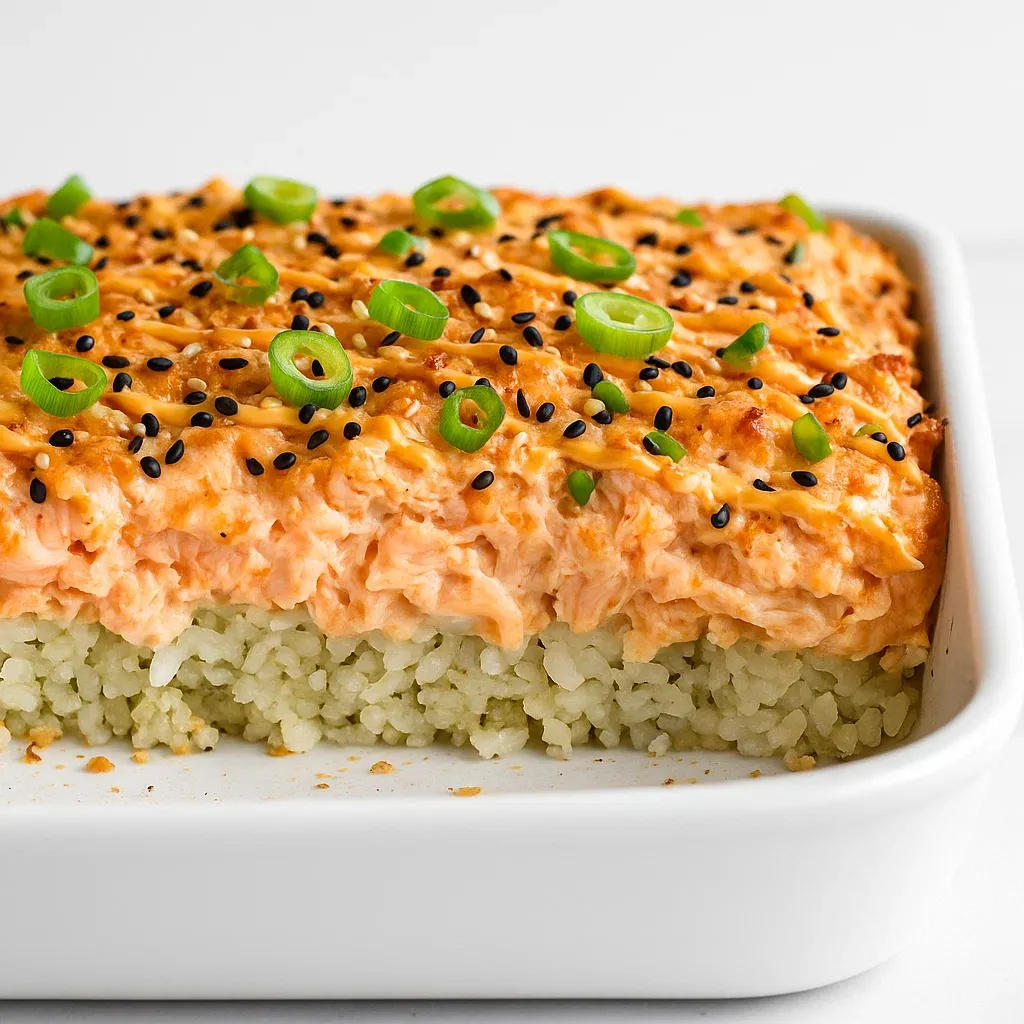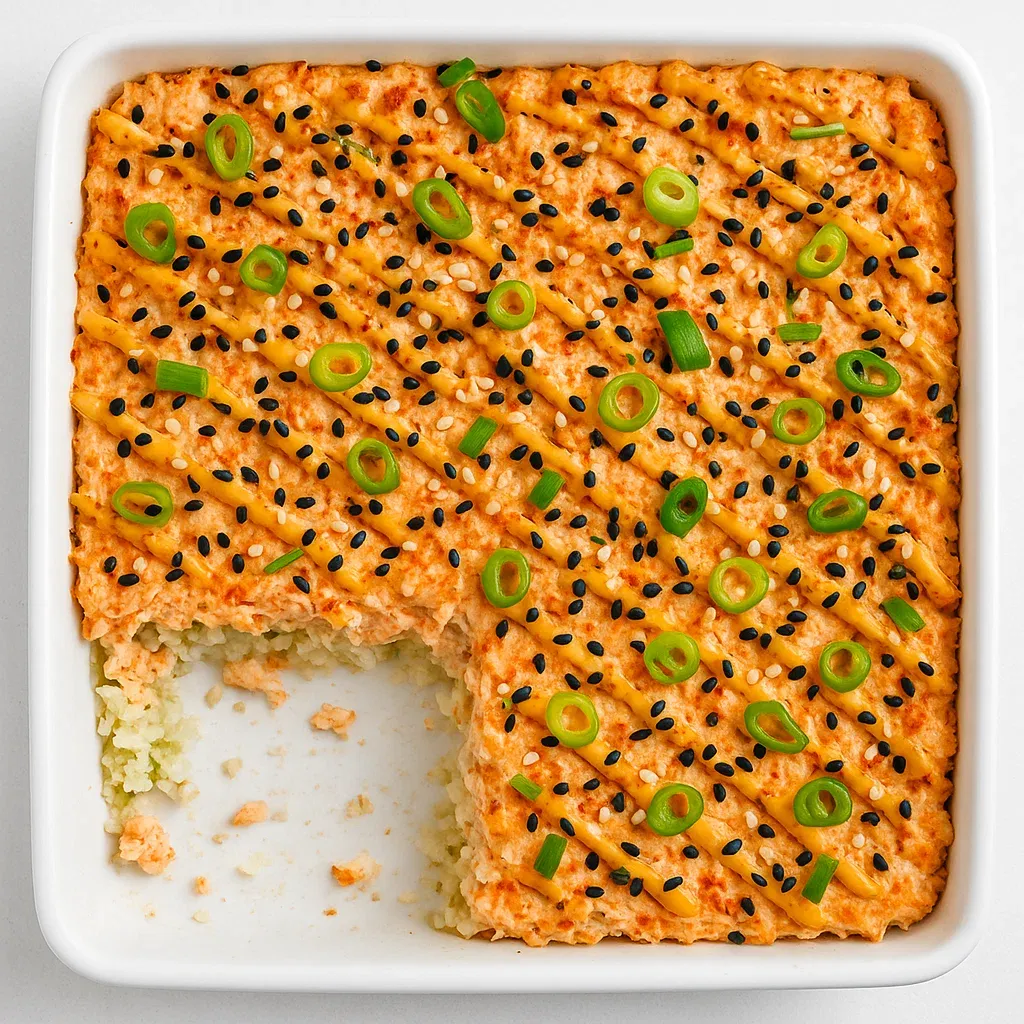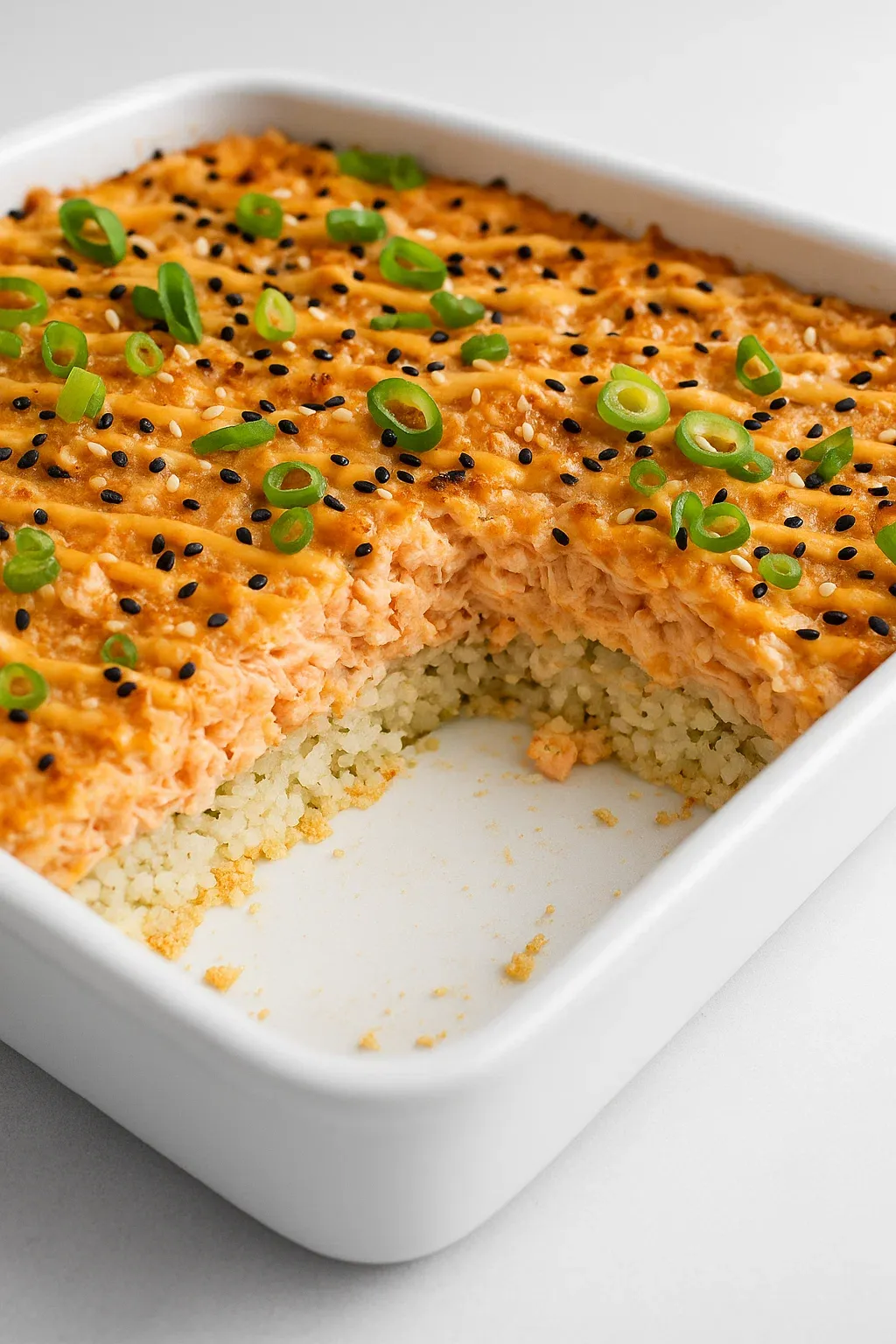 Pin
Pin
This hearty Salmon Sushi Bake transforms classic Japanese flavors into a cozy, shareable casserole format that's become my go-to dinner party dish for both sushi lovers and those hesitant about raw fish.
I first created this dish when hosting friends who loved sushi but were intimidated by making it at home. The moment I pulled that bubbling baking dish from the oven, everyone gathered around excitedly, and it's been requested at every gathering since.
Ingredients
- Sushi rice: forms the foundation with its sticky texture that perfectly holds everything together
- Seasoned rice vinegar: adds that signature tangy sushi flavor that balances the rich toppings
- Salmon fillet: provides heart-healthy protein and that distinctive seafood flavor you expect from sushi
- Imitation crab meat: contributes a sweet flavor and distinctive texture reminiscent of California rolls
- Japanese mayonnaise: brings richness with its unique eggy quality that regular mayo cannot match
- Cream cheese: creates a luxurious creaminess that melts beautifully when baked
- Sriracha: adds customizable heat and vibrant color to cut through the richness
- Furikake seasoning: sprinkled between layers adds authentic umami and visual appeal
- Roasted seaweed sheets: serve as the perfect vehicle for scooping up each delicious bite
How To Make Salmon Sushi Bake
- Prepare the rice:
- Rinse sushi rice under cold water until it runs clear, stirring gently with your fingers to release excess starch. This crucial step prevents gumminess and ensures each grain maintains its integrity. Cook according to your rice cooker instructions, then gently fold in seasoned rice vinegar while the rice is still warm, being careful not to crush the grains as you create that signature sushi rice texture.
- Cook the salmon:
- Season salmon generously with salt, pepper, and garlic powder before baking at 400°F for about 15 minutes. The salmon should flake easily with a fork but remain moist inside. This gentle cooking method preserves the delicate texture while ensuring it's fully cooked for food safety. Allow to cool slightly before breaking into chunks.
- Create the filling:
- Combine the cooled salmon with chopped imitation crab, Japanese mayonnaise, softened cream cheese, sriracha, and soy sauce in a large bowl. Mix thoroughly but gently to maintain textural contrast between the seafood pieces. This filling should be creamy yet chunky with a balanced flavor profile that hits notes of spicy, savory, and rich.
- Assemble and bake:
- Spread cooled sushi rice evenly in your baking dish, pressing lightly to create a solid base without compacting too firmly. Sprinkle the furikake generously across the entire surface to ensure flavor in every bite, then top with your salmon mixture, spreading to the edges. Broil for just 4 minutes until bubbling and slightly golden on top, watching carefully to prevent burning.
- Garnish and serve:
- Drizzle with spicy mayo in artistic patterns, sprinkle with fresh sliced green onions and sesame seeds for color and texture contrast. Serve immediately with accompaniments like cucumber slices, avocado, and sheets of roasted seaweed for scooping.

My family particularly loves how the cream cheese melts into pockets of richness throughout the dish. I'll never forget the first time my skeptical father-in-law tried this, declaring it "better than restaurant sushi" before going back for a second generous helping.
Make-Ahead Options
This sushi bake offers excellent make-ahead potential for busy hosts. The rice can be prepared up to a day in advance, though you'll want to cover it with a damp paper towel in the refrigerator to maintain moisture. The salmon mixture can also be prepared ahead and stored separately. When ready to serve, simply bring components closer to room temperature, assemble, and broil for a fresh-from-the-oven experience. This approach has saved me countless times during dinner parties, allowing me to focus on guests rather than cooking.
Perfect Pairings
Complement this rich dish with light, refreshing sides that balance its decadence. A simple cucumber salad dressed with rice vinegar and a touch of sugar creates a palate-cleansing counterpoint. For beverages, Japanese beer like Sapporo works wonderfully, or try chilled sake for an authentic pairing. For non-alcoholic options, green tea or a citrusy yuzu spritzer cuts through the richness beautifully. In my home, we always serve this with pickled ginger on the side for those who enjoy that classic sushi accompaniment.
Variations To Try
The beauty of this sushi bake lies in its adaptability. For spice lovers, incorporate wasabi into the mayo drizzle or mix chopped jalapeños into the filling. Seafood enthusiasts might add cooked shrimp or scallops alongside the salmon. Vegetarian guests can be accommodated with a version using marinated tofu and extra avocado in place of the seafood. I once created a California roll version using only imitation crab that was a huge hit with children at a family gathering. The foundation remains the same, but the variations are endless.

Recipe FAQs
- → How do you prepare the sushi rice?
Start by washing the sushi rice thoroughly, cooking it in a rice cooker with water, and then folding in seasoned rice vinegar gently. Let it cool before using in the dish.
- → What is the best way to season the salmon?
Season the salmon fillet with salt, black pepper, and garlic powder before baking at 400°F until it reaches an internal temperature of 145°F.
- → Can I substitute imitation crab in this dish?
Yes, you can substitute imitation crab with real crab, shrimp, or leave it out for a stronger salmon flavor.
- → What is furikake, and why is it used?
Furikake is a Japanese seasoning blend often made with seaweed, sesame seeds, and fish flakes. It adds extra umami to the dish.
- → What toppings can I add to customize the bake?
Popular toppings include spicy mayo with sriracha, black and white sesame seeds, chopped green onions, and additional furikake for flavor and texture.
- → What are the best sides to serve with this dish?
Serve with roasted seaweed sheets, slices of avocado, cucumber, and a drizzle of unagi sauce to complement the flavors and textures.
